Wondering how much you are pushing uphill on the leg press machine? Here’s a detailed look at the most common weights for leg press machine sleds.
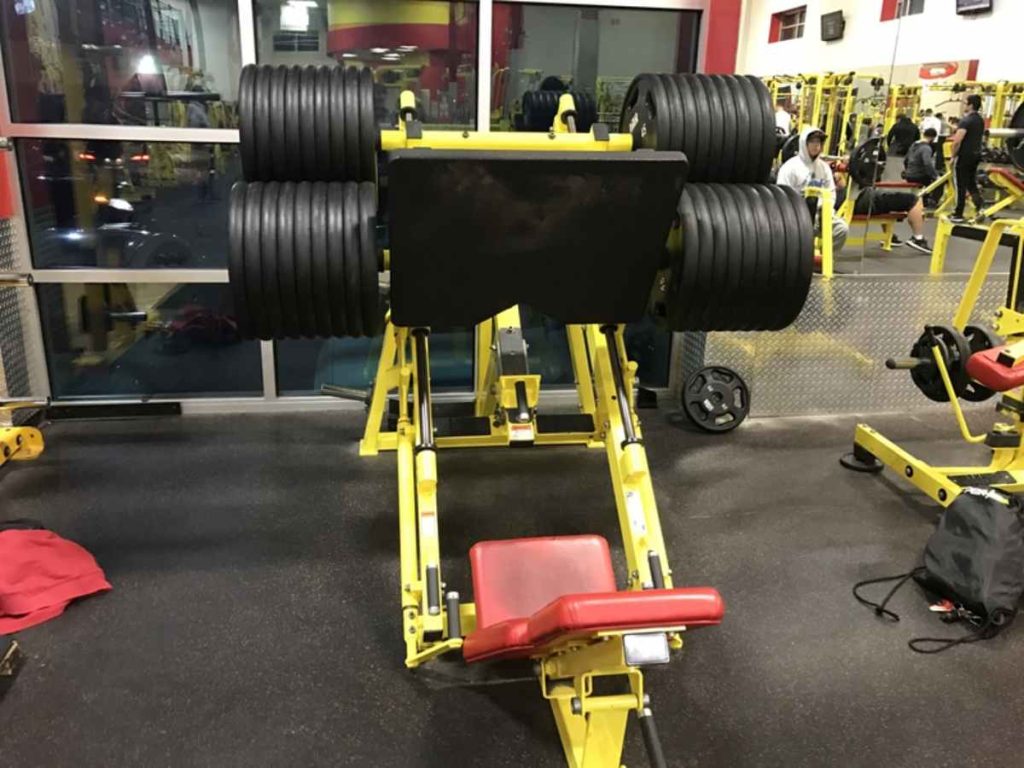
Going to the gym and hitting a new PR is, well, the best.
But, in order to know how much you are lifting, and whether that new PR is legit or not, you need to understand exactly how much weight you are pushing.
In this guide, we will look at the most common leg press machines, and the weight of their respective sleds, so you can know with confidence that you are lifting like a certified gangster.
Let’s jump right in.
The Leg Press Machine – The Basics
Before we jump into specific leg press machine sled weights, it’s important to understand what type of leg press machine you are working with, as the starting sled weight of each varies.
There are generally three kinds you will see at your local gym:
? Angled leg press machine.
This is what most people think of when we are talking about leg press machines—it’s got a sled angled at around 45-degrees that you push towards the corner of the room.
It’s plate loaded, and the carriage is locked in with stoppers at the bottom to help prevent you from getting crumpled up on a failed rep.
? Seated leg press machine.
The seated leg press is another popular leg pressing machine. Instead of pushing the weight in an angled direction, the weight moves horizontally, making it more of a push than a press.
Seated leg press machines almost always use weight stacks for resistance.
? Vertical leg press machines.
These come in a range of sizes and types, with industrial-grade models, inexpensive models you can use at home, and you can also modify a Smith machine to perform vertical leg presses (more on how much a Smith Machine bar weighs here).
How Much the Sled on Leg Press Machines Weigh
Okay, let’s get into the common resistance levels of the sleds on weight machines.
But before we do, there is one very important thing to keep in mind.
The sled weight doesn’t represent “true” resistance.
Because they are on angle and depending on the amount of friction on the carriage, the actual weight is between 60-70% of the stated weight of the sled.
(This is also why you can press much more weight on a leg press compared to how much weight you can barbell back squat.)
With that little caveat behind us, let’s get to the numbers:
Angled Leg Press Sled Weights
Let’s start off with the most common leg press machines that lifters use, the angled/45-degree machines.
The average weight of the sled on an angled leg press machine is 109lbs.
Cybex Leg Press Machines
The Cybex Leg Press Machine, made by Life Fitness, is one of the most common leg press machines you will see in the gym!
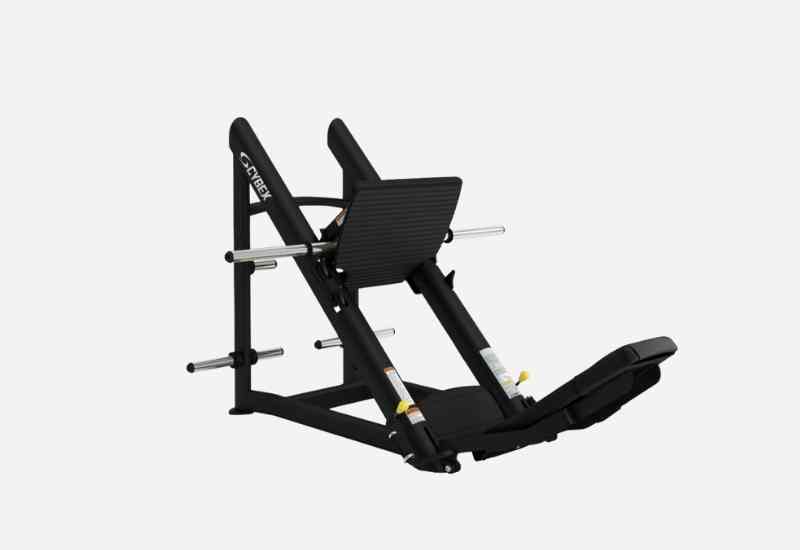
The weight of the sled on a Cybex machine is approximately 100lbs, but because it’s on an angle, the actual load is around 70% of the weight, giving you a “real” weight of 70lbs.
Life Fitness Signature Series Leg Press Machine
Another leg press machine you are likely to see at your neighborhood gym is the Signature Series Leg Press.
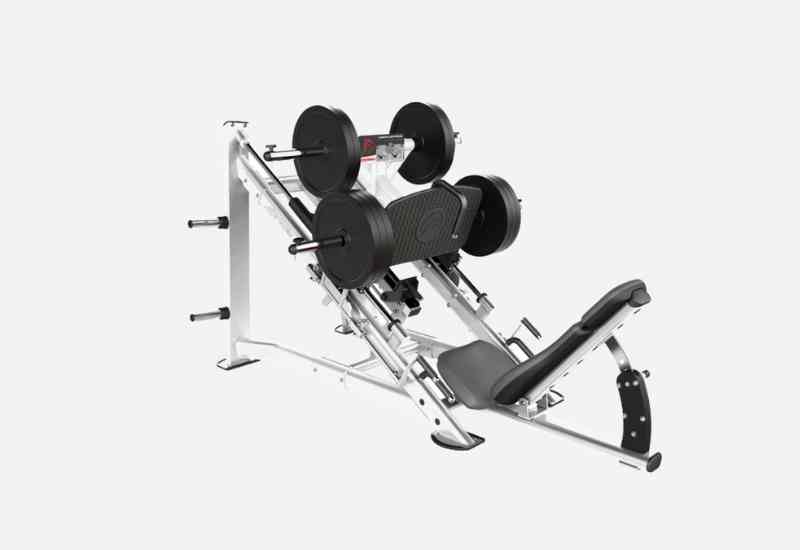
This thing is built for high-volume use, and for heavy-duty use, too. It can fit up to 32 45lb weight plates on the sled alone, which has a weight of 103lbs.
Hammer Strength Loaded Linear Leg Press Machine
Hammer Strength machines are a fixture of my local gyms, and for good reason. They are built to handle a ton of punishment.
Their Loaded Linear Leg Press Machine is made with bomb-proof 11-gauge steel and it has extra long sleeves for loading up a heaping pile of iron when doing leg press.
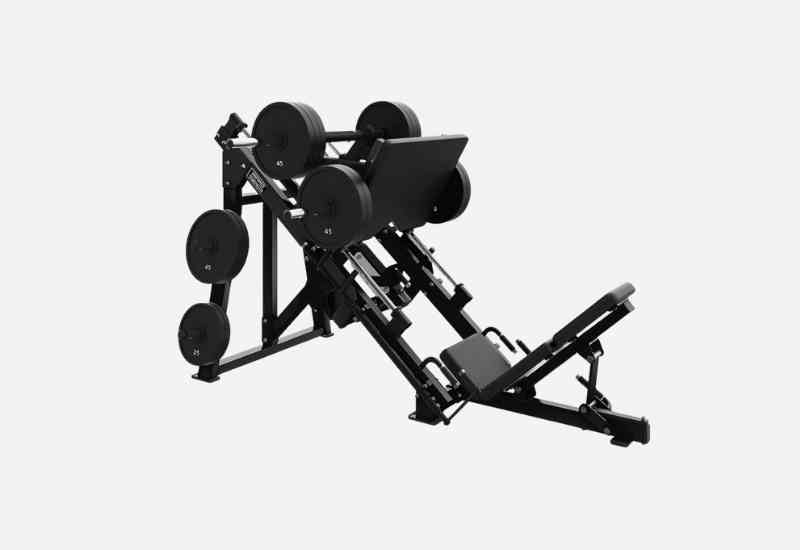
The starting weight on the sled is just under 120lbs, making it one of the heavier sleds for leg press machines.
Rogue ISO Leg Press Machine
The Rogue ISO Leg Press Machine is one of the best leg press machines on the market.
You can press unilaterally, it has a TON of weight plate storage, and it’s built like a tank, tipping the scales—before loading it with plates—at nearly 2,500lbs.
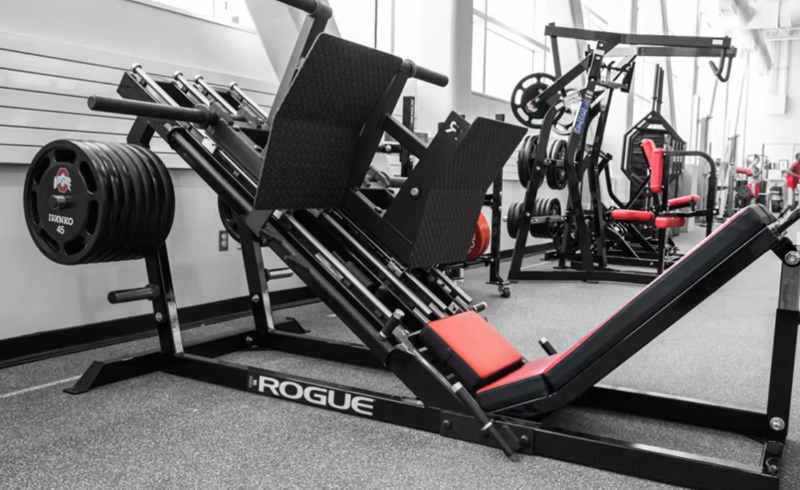
The weight sled is also the heaviest one I’ve come across, at 182lbs, due to the added steel for the unilateral capabilities.
Other common angled leg press machines and their starting sled weights:
Atlantis Leg Press Machines – 125lbs
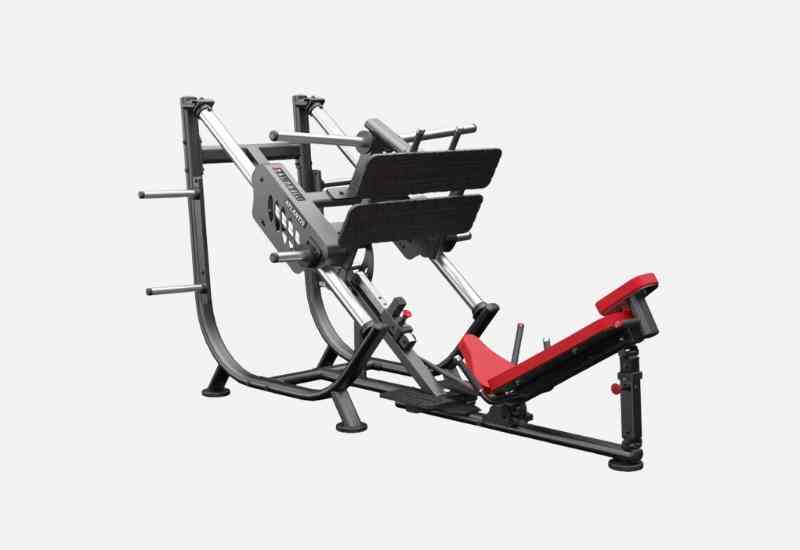
Nautilus Leg Press Machine – 100lbs
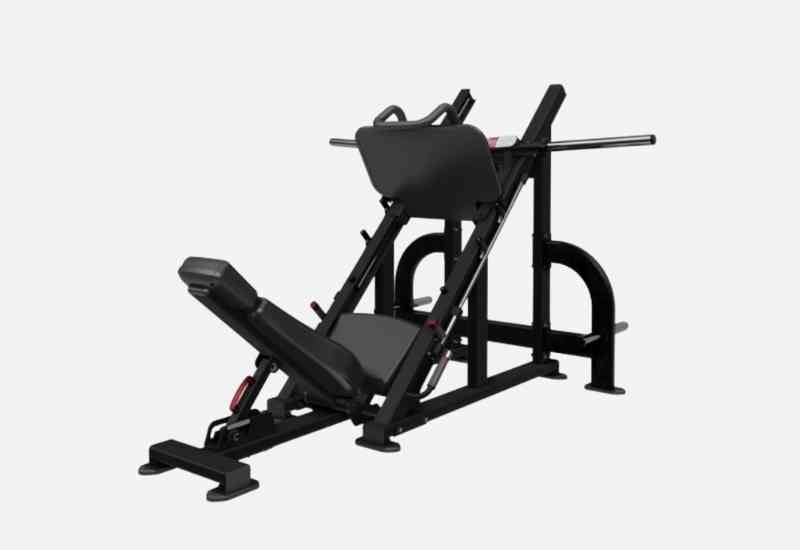
Seated Leg Press Sled Weights
Because seated leg press machines are designed for beginners and novices, the starting weight is significantly lower.
Additionally, because the movement is done horizontally, the sled weight is almost zero. Or rather, it feels like zero because gravity is doing a lot of the work for you.
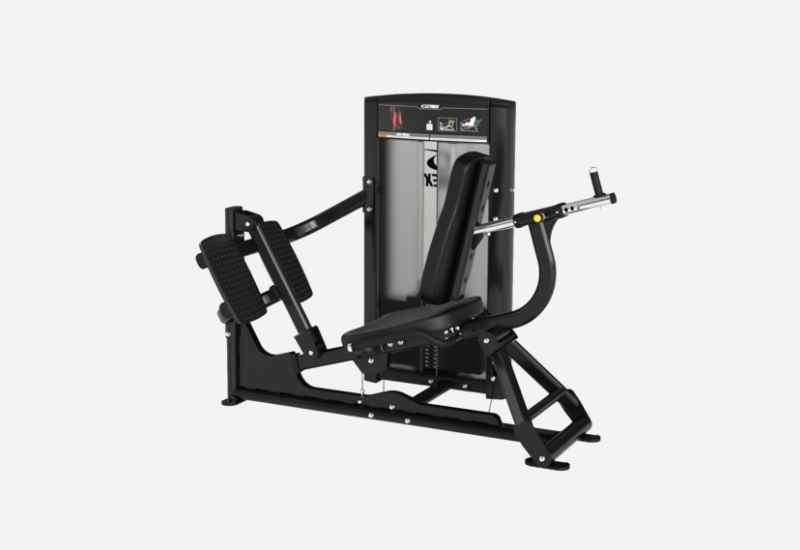
The starting weight is typically represented by the weight of the pulley and the first weight plate on the stack, which can be anywhere from 5-20lbs.
The average starting weight on a seated leg press machine is 5-20lbs, depending on the weight of the first plate on the weight stack.
Vertical Leg Press Sled Weights
Finally, we have the vertical leg press, which is my personal least-favorite form of leg pressing, strictly from a safety standpoint.
That said, there are some (very experienced) lifters who swear by it, so we will include vertical leg press in this little list too. Vertical leg press also gives a more “true” weight when loading the bar compared to angled presses.
There are dedicated vertical leg press machines out there.
The Titan Fitness Vertical Leg Press Machine, for example, has a starting bar weight of 17lbs.
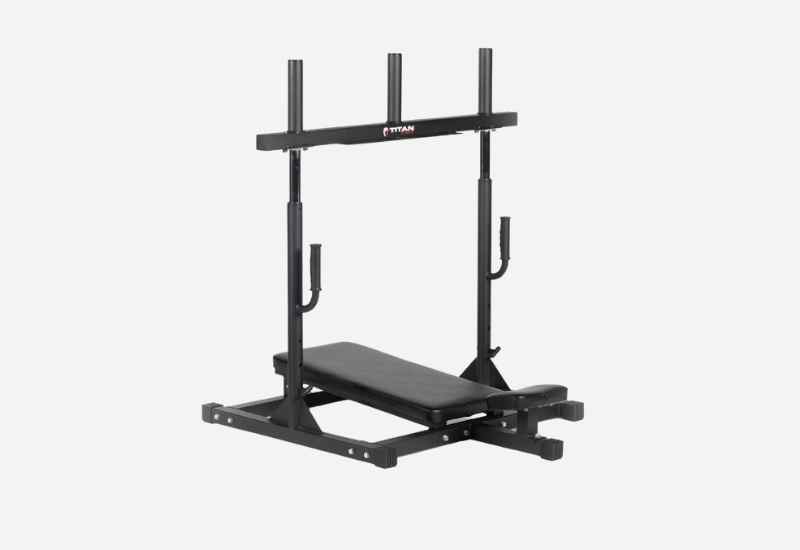
Vertical leg presses can also be done on a Smith Machine, which can have a bar weight anywhere between 6-45lbs.
Smith machines that are counter-balanced have a lighter load, weighing around 6-20lbs. These are the bars that glide easily up and down the carriage.
Vertical leg press machines have a starting weight of anywhere between 6-45lbs depending on the type of machine and bar weight.
Leg Press Sled Weight — FAQs
Why can I leg press more than I can squat?
There are two main reasons you can leg press (sometimes significantly) more than barbell squat.
For starters, with leg presses you have the benefit of angled resistance.
Because you are pushing the weight on an angle (or horizontally in the case of seated leg press machines), you are getting an assist from gravity. A significant amount of the load is being directed downwards, and not squarely on you.
Actual load varies from 60-70% on angled leg press machines. (Vertical leg press machines are closer to 1:1).
There are a few things that come into play, including the angle of the machine (higher angle represents more “true” weight) and even the friction on the sled.
Additionally, you can leg press more than you can squat because you are using fewer muscles.
Balancing a loaded barbell on your back is extremely energy intensive and places a heavier demand on the nervous system.
While the leg press still works a lot of muscles, including your quads, hamstrings and calves, because you are seated, the core and back, and all of those stabilizer muscles in your legs, are all taken out of the equation when doing leg press.
For a more detailed comparison, read this article on leg press vs. squats.
Should I count the weight on the sled when doing leg press?
I wouldn’t recommend doing so.
Instead, focus on the number of plates being stacked on the machine for tracking purposes and your RPE (rate of perceived exertion).
At the end of the day, as long as you are training with progressive overload in mind, and adding plates to the machine over time, you will see gains in muscle strength and mass.
Getting lost in the weeds trying to figure out the exact angle of the sled and the amount of friction on the carriage to figure out exactly how much weight you are pushing is secondary to moving closer to your training goals, whether that be weight loss, muscle gain, or getting stronger.
The Bottom Line
There are a lot of benefits to leg presses and hitting the leg press machine on leg day.
Ultimately, the weight of the sled on the machine is a small but fun thing to know so that you can get a better sense of how much weight you are moving.
But as long as you continue showing up, adding progressively more weight to the machine, and working to failure, you will see the gains and improvement you are looking for.
More Leg Press Guides and Articles
Leg Press Foot Placement: 6 Foot Positions and the Benefits of Each. Looking to mix up your leg press? Here are some different leg press foot placements to laser-target different muscles in your legs.
6 Best Leg Press Alternatives for Monster Leg Muscles. Looking to mix up your leg training? Here are the six best leg press alternatives for conquering leg day.